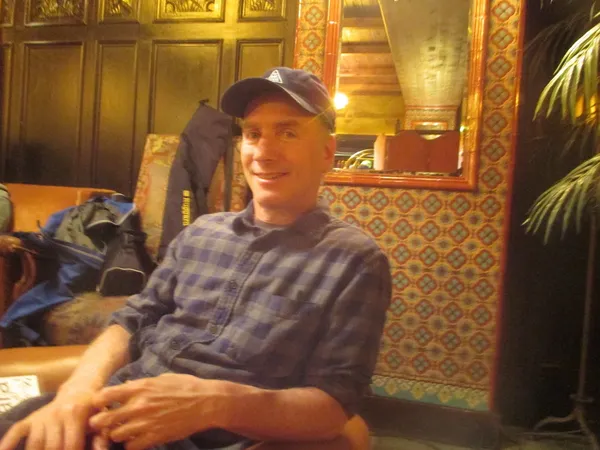 |
| Chuck Smith at The Bowery Hotel on Barbara Rubin: "I think Walt Disney fascinated her all the time and fairy tales." Photo: Anne-Katrin Titze |
Through interviews with Jonas Mekas, Amy Taubin, Gordon Ball, Richard Foreman, J Hoberman, Ara Osterweil, Rosebud Feliu-Pettet, Debra Feiner Coddington, and illustrated by film clips, and photographs, Chuck Smith is in search of answering questions such as, who is Barbara Rubin and why haven't you heard about her?
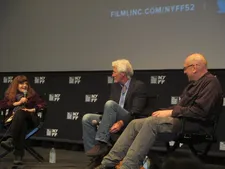 |
| Chuck Smith on Barbara Rubin friend Amy Taubin, seen here with Richard Gere and Oren Moverman: "She's in Michael Snow's Wavelength, the legendary experimental film." Photo: Anne-Katrin Titze |
Barbara Rubin And The Exploding NY Underground, with an original score by Lee Ranaldo, resurrects the filmmaker and instigator to take her place as a vital interconnected thread for the likes of Andy Warhol, the Velvet Underground, Lou Reed, Allen Ginsberg, Bob Dylan, Federico Fellini, Lenny Bruce, and many others.
More than a decade before the No Wave and Cinema of Transgression filmmakers highlighted in Celine Danhier's Blank City emerged, there were Stan Brakhage, Jack Smith, Shirley Clarke, Ron Rice, Ken Jacobs, Jerry Jofen, Mekas, Warhol, and a teenager named Barbara Rubin pushing the boundaries of expression.
At The Bowery Hotel in New York, Chuck Smith joined me for a conversation on the life and work of Barbara Rubin, the desire for "a Werner Herzog voice" in the documentary, and the challenges of storytelling.
Anne-Katrin Titze: You brought a book?
Chuck Smith: This came out last October [Film Culture 80 - The Legend of Barbara Rubin]. He [Jonas Mekas] always wanted to bring back the magazine to do one more issue on Barbara.
AKT: So this was the last one he did?
CS: Yes. He died January 23 [2019].
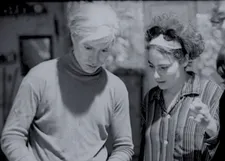 |
| Barbara Rubin shot Bob Dylan's Screen Test at the Factory: "I love the picture with Andy Warhol with the light. Yes, he was behind the camera sometimes." |
AKT: The cover is signed by people?
CS: It's actually a letter. The Germans did a really nice job of design [Spector Books]. They're from Leipzig. I love the paper too.
AKT: East German. Did she ever go to Germany?
CS: She spent a fair amount of time in Europe in '65, '66 and would travel around. She spent some time in France and Italy, I know. She met Fellini over there. Fellini wanted her to be in a movie.
AKT: Which one?
CS: Jonas knew. We'd have to look at the timing. It was the summer of '65. So whatever Fellini was shooting there [Juliet of the Spirits]. I could look at my notes.
AKT: And she said no?
CS: She said no for some reason.
AKT: But then she wanted Fellini in her film Christmas on Earth Continued! Together with everybody else, from Belmondo to Dali.
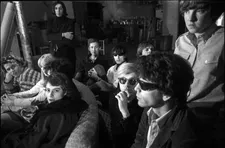 |
| Barbara Rubin on the couch at the Factory |
CS: Everybody, yeah. But she did know all these people. That was the crazy thing - you can look at that list. Jonas even had a thing that Lenny Bruce had signed to Barbara from jail.
AKT: The letter she wrote to Walt Disney and her love for Snow White - it's fascinating how this relates to everybody's childhood. Even the counter-culture. Everybody loved that movie, from Hitler to Alan Turing.
CS: She never went to school, I mean when she dropped out in 8th grade, so she really did just do a lot of reading and watching from early age. And she hit the road and would hitchhike and travel around when she was 13, 14. I think Walt Disney fascinated her all the time and fairy tales. Just the whole idea of fairy tales. She was a real dreamer that way.
AKT: Any particular tales that you came across?
CS: A lot of them. If you read in the script of Christmas on Earth Continued, there's definitely references to Snow White and Santa Claus and things we all believe in, like fairies.
AKT: Before coming downtown, I just spoke with my students at Hunter College about Mary De Morgan, who wrote very interesting fairy tales in the late 19th century and is more or less unknown today. There is a lot of her suffragette spirit in the tales, something I think Barbara Rubin might have appreciated also. And both of them share the fact that too few people know about their work. That resurrection was something you wanted to do?
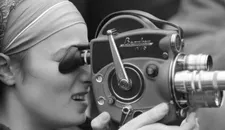 |
| Chuck Smith on Barbara Rubin: "I would say if you'd been to a party back then, Bob Dylan or Lou Reed would not be the ones you would notice." |
CS: Yeah, and Jonas, big time. But isn't it funny that people who believe in fairy tales the most, somehow create that world, their lives become a fairy tale? In a way her life became a fairy tale.
AKT: Her life is an incredible journey. From childhood onwards. It is phrased in your film that she "had been taken away" to an institution.
CS: One of the things I discovered doing research and on all the people she knew - if men were a little crazy going out at night or doing drugs or sleeping around, they were told to do sports or it's okay. But if the women were doing that, it was a dangerous thing for society and they were often sent to mental institutions. People who were perfectly well! It's scary. One of the women in the film who was in Christmas on Earth, spent a year and a half in an institution. And she was perfectly fine. There was a real sexism in the way that was treated.
AKT: Because they were challenging the status quo.
CS: And I did mention in the film the diet pills. Everyone was doing speed back then for diets. And even her aunt, who is in the movie - I didn't put it in - she said "Oh I was addicted to speed for two years."
AKT: And to give that to a child, just because she's a little bit overweight. Unbelievable, and drugs from then on do play an important role in Barbara Rubin's life. The drugs were a driving force for that whole group, you show, something that also destroyed a lot.
 |
| Sonja Kinski at Anthology Film Archives Photo: Anne-Katrin Titze |
CS: In New York, a lot of those things happened way earlier than people think. Because of people like Allen Ginsberg and because of this creative connection. I mean, Allen Ginsberg knew Timothy Leary up in Harvard. So in the late '50s he already was getting very good LSD. And Leary would literally say "Go give some acid to all the cool people in New York." And he would. And Barbara was one of those people.
AKT: You have a scene where someone says that she knew more about drugs from the institution than all of the grown men around her. You start the film with "the soul as divine light." Where did that come from?
CS: That's an interesting story because Barbara's eventual husband [Isaac Besancon], who is a well-known rabbi in Tel Aviv, wrote a couple of books.
AKT: The second husband?
CS: Yes, the second husband, the artistic one. He wrote a couple of books after Barbara died. One called Faith and the other Dear God. They were written in Hebrew but he transcribed them into English and I read them. They are basically a collection of old Judaic myths and things like that. They really were his way of dealing with her passing.
Anyway, it's common wisdom from the Jewish tradition. So I pulled out my favourite bites from the two books that related to Barbara. It was my way of putting him in the film. He didn't want to be in the film.
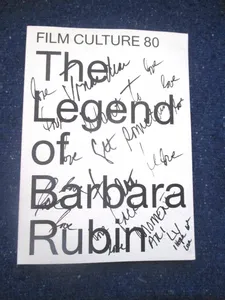 |
| Film Culture 80 - The Legend Of Barbara Rubin - Editor-in-Chief Jonas Mekas Photo: Anne-Katrin Titze |
AKT: Nor the children?
CS: Nor the children. But it was my way of sort of putting their voice in the film. And I kind of wanted a Werner Herzog voice. Because I like Werner. And I got my Czech friend, who sounds pretty good.
AKT: Did you see Herzog's Meeting With Gorbachev film?
CS: No, it was at a festival and I had a ticket and I missed it. I want to see it.
AKT: Jonas Mekas says about Barbara that "She helped to make the chemistry of the period."
CS: Chemistry of a period is something that we forget. A lot of people say, well where are Barbara's other films? She made just one film. Well, she did a lot of other shooting but didn't leave behind a massive amount of stuff. Bob Dylan left tons of songs. Allen Ginsberg left tons of poems.
AKT: Andy Warhol left tons of everything.
CS: He didn't create it all but he left it all.
AKT: That's true.
CS: And a lot of the stuff that Barbara shot was left with the Warhol people and that's where I had to find it. My point was that, the chemistry is sort of that feeling of what makes the scene interesting. And those people don't often leave behind much.
I would say if you'd been to a party back then, Bob Dylan or Lou Reed would not be the ones you would notice. They'd be in the corner, like, hiding or taking notes. The people who actually keep things going are someone like Barbara.
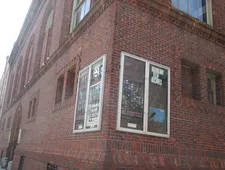 |
| Anthology Film Archives founded by Jonas Mekas Photo: Anne-Katrin Titze |
AKT: The re-discoveries can be stunning. I don't know if you saw at the Guggenheim the Hilma af Klint exhibit?
CS: Yes - beautiful!
AKT: Another ground-breaking woman that people knew nothing about and here is that fantastic exhibit! A great moment in your film is with Jonas [Mekas] when he is filming the little boys in the park. They shout "Hey, take my picture mister! Take my picture!" And his response is "Yes, always. Anytime!"
CS: That was Jonas until the end.
AKT: Were you close?
CS: I think in the last few years I was really fortunate to become close. He changed my life in a lot of ways. And his attitude, what kept him alive was just that feeling of filming anytime, anyplace and it's all good. Just keep working.
AKT: Generosity?
CS: Generosity of spirit. And I think he learned some of that from Barbara.
AKT: She made Allen Ginsberg cut off his beard.
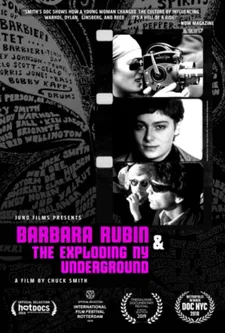 |
| Barbara Rubin And The Exploding NY Underground poster - opens in New York at the IFC Center on May 24 |
CS: She made him buy a farm! That's even worse.
AKT: You show both sides to that - the idyllic dream and the drugs that destroy it all. Which ultimately makes her decide to leave. Do you think it's logical, that progression in the end to Kabbala, to Orthodox Judaism and to be so involved?
CS: I think it does make sense if you know more. I try to make it a little bit of a shock in the film because I think it did shock a lot of people. But if you knew her well, she was always seeking family and a community. And when the community she had among the filmmakers disappeared she tried to create it at the farm. That didn't work.
I don't even mention Harry Smith or Lionel Ziprin, two other bizarre legends of the downtown New York scene, who are also very mystical and into spirituality. But Barbara knew them very well too. So she was always dabbling in the idea of religious fanaticism, you know, being very into something.
AKT: I like the images when Bob Dylan receives the double Elvis from Andy Warhol and they try to pack it in the car. I will never be able to see that painting again without thinking of that moment. Where did you find this?
CS: Strapping it on top [of the car]. That's an interesting story. And if you look closely, that is Barbara outside with him. That was Nat Finkelstein who took so many good pictures in the Factory. There were so many contact sheets that his widow [Elizabeth Murray Finkelstein] had. She's an associate producer on the film because she's helped me so much.
When I reached out to her, she said "It's so funny that you're calling me now, because I'm going through all the old pictures and this woman keeps popping up. And I had no idea who she was." And when I said "That's Barbara Rubin" she was like "Oh my god." And when we looked at that sequence of that day, we realized what happened.
AKT: It's great.
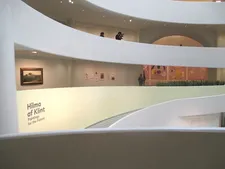 |
| Hilma af Klint at the Guggenheim Museum in New York Photo: Anne-Katrin Titze |
CS: And we also realized that she shot Dylan's Screen Test. Which nobody would ever admit to or know. She shot other Screen Tests and other stuff at the Factory. I love the picture with Andy Warhol with the light. Yes, he was behind the camera sometimes. But good for him, he would also hold the light. And what's wrong with that?
AKT: Barbara's aunt [Selma Katz] and her cousin [Itka Brill] are talking to you, sitting next to each other, both dressed in pale blue. They tell the family lore.
CS: That's the American side of the family. I wish I could say I planned that, but I didn't. They just showed up wearing blue. I thought that was great. I did decide to put them together. I don't even tell that full story, but the younger woman is also Orthodox. And she became Orthodox because of Barbara. And the mother is not. And there was actually a little tension.
AKT: Oh yes, the way she covers her hair.
CS: The mother didn't quite understand her own daughter in the same way she didn't understand Barbara. And as they were talking, it became clear that she hasn't fully accepted that her own daughter became Orthodox.
AKT: I did not know, I have to admit, that Amy Taubin used to be an actress.
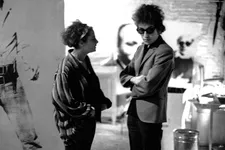 |
| Chuck Smith on Barbara Rubin with Bob Dylan and Andy Warhol at the Factory: "And we also realized that she shot Dylan's Screen Test." Photo: Nat Finkelstein |
CS: She's very clear about that and that's why Andy liked her - oh she's an actress, she's been in a couple of movies. She's in Michael Snow's Wavelength, the legendary experimental film.
AKT: What are you working on now?
CS: The filmmaker and photographer Danny Lyon - he had a big show at the Whitney about three years ago. He took a lot of beautiful pictures in the Sixties and Seventies and also filmmaking. His archives are immense. In a way it's the exact opposite of Barbara Rubin.
AKT: Only the timeframe is slightly the same.
CS: Slightly. He is still alive. I've never done a living person. I'm a little worried about doing someone who can talk back. Danny is fascinating and he liked the Barbara Rubin film. He took a lot of the early Civil Rights photos, so people know who he is in that world. But not many beyond it. And that's always interesting. It's sort of a storytelling challenge. The same way that Barbara Rubin was a storytelling challenge.
AKT: I can tell. It's not very linear.
CS: No, you sort of have to feel the emotional story. What really did it for me was when I thought of it in chapters with these men who were important to her. And broke it down that way, because all this stuff is happening at the same time.
One more thing about Jonas: When I went to talk to him, first thing I said was "Can you tell me about your relationship with Barbara?" And he said "I'm not going to talk about my personal relationship with Barbara at all." So in the end, we hung out and we just talked and I had him read things and the emotion came through anyway. And other people talked about it. You feel that the love was there.
AKT: The people are very clear about how much he loved her. And also about how much she loved Allen Ginsberg.
CS: Yes, and it kind of broke Jonas's heart. She did break Jonas's heart by leaving that scene.
Barbara Rubin and the Exploding NY Underground opens in the US on May 24.





















